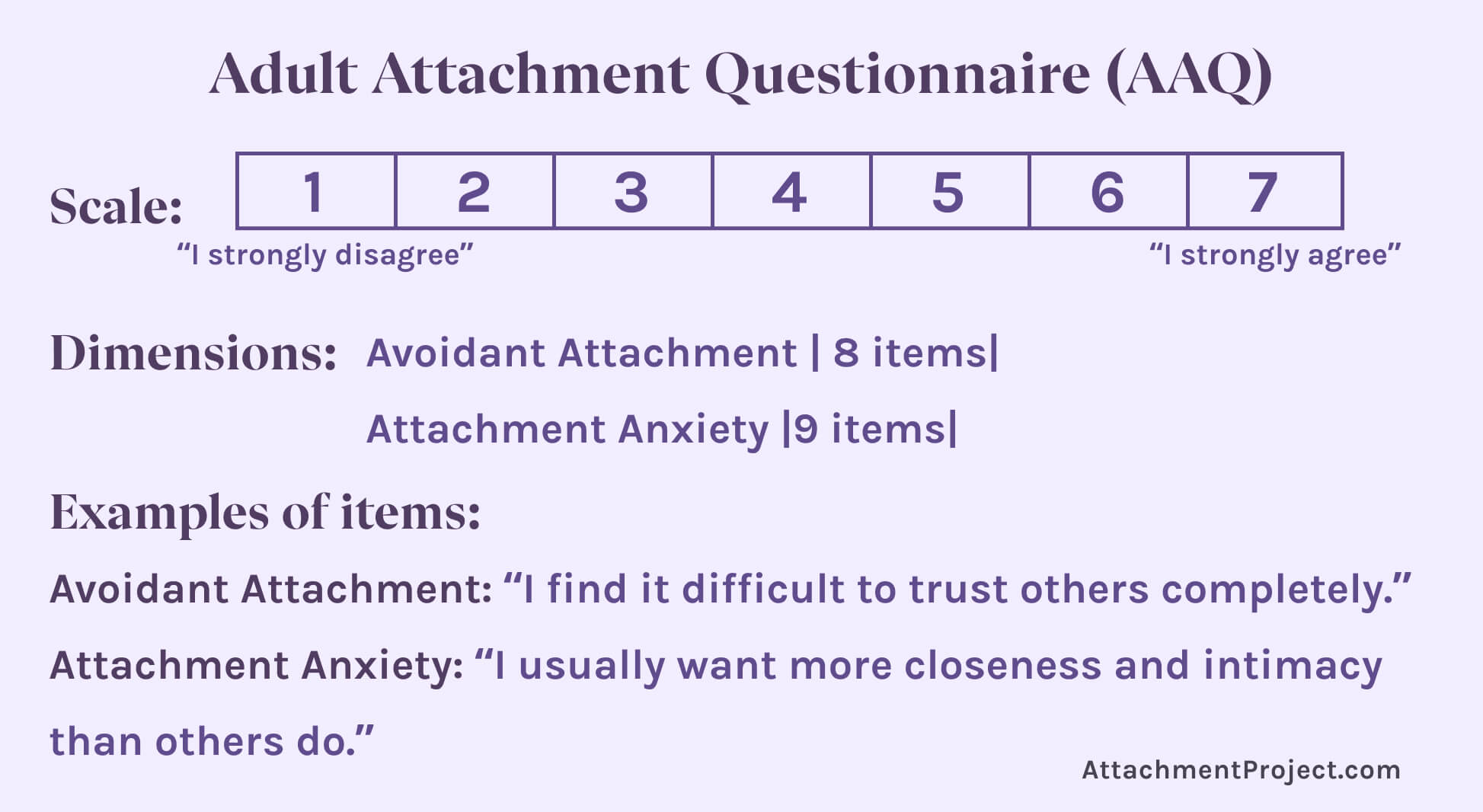

They are comfortable expressing their emotions, and tend not to suffer from depression and other psychological disorders." Previous research on attachment styles indicates that secure people tend to have relatively enduring and satisfying relationships. Your attachment-related avoidance score is 1.55, on a scale ranging from 1 (low avoidance) to 7 (high avoidance).Ĭombining your anxiety and avoidance scores, you fall into the secure quadrant. "According to your questionnaire responses, your attachment-related anxiety score is 3.56, on a scale ranging from 1 (low anxiety) to 7 (high anxiety). For more information, read about our couples therapy or marriage counseling services.Can't see yours in the link, just takes you to the start of the quiz. This emotionally focused approach provides the impetus for exploring new, more positive ways of relating, and frees people to experience genuine loving feelings and real security in their intimate relationships. Both partners come to understand the source of their destructive thoughts and attitudes in the context of their earliest attachments and learn emotional skills to stay connected at the moment. In couples’ therapy, both partners can identify and challenge beliefs that promote expectations of rejection and that fuel their feelings of anger. For more information, contact us, or read about our relationship counseling services or counseling for low self-esteem. In therapy, you can test out beliefs and assumptions with your therapist and learn to feel and react differently, which can translate to your romantic relationships. The experience of the therapeutic relationship itself can heal early attachment wounds and help you develop a more secure attachment style. Therapy is a safe relationship where you can learn to identify and express your needs, practice communication skills, heal shame and learn self-compassion. Therapy can be very helpful for changing maladaptive attachment patterns. Taking the risk to be authentic can deepen your connection with others and reduce your shame and reactivity. You may also need to learn to be more assertive so that you can express your emotional needs. Learning to identify, honor, and assertively express your emotional needs can help you have a voice in your relationships and avoid codependency. Healing shame can help increase your sense of connection and belonging with others. Learning acceptance of yourself and others can improve all areas of your life and help you resolve conflict from a “we” perspective. This enables you to not take things personally, to resolve conflicts in relationships openly, and to seek a securely attached partner. Heal your shame and raise your self-compassion It can challenge you to develop yourself and grow in that relationship, ultimately healing patterns from the past. A positive experience with a securely attached person can override your insecurity. Relationships with friends, romantic partners, a caring teacher, mentor, or therapist can all help instill a secure attachment. If you think you’re insecurely attached, and it’s having a negative impact on your love life, here are a few common-sense steps you can take to make the transition to secure attachment: Seek a relationship with someone who is securely attached. Your attachment style can change with new attachment experiences. However, when there is an anxious or avoidant attachment pattern and a person picks a partner who fits with that maladaptive pattern, they will most likely be choosing someone who isn’t the ideal choice to make them happy. When there is a secure attachment pattern, a person is confident and self-possessed and is able to easily interact with others, meeting both their own and another needs. Even when these patterns hurt you and are not in your own self-interest. If you grew up with an insecure attachment pattern, you may project or seek to duplicate similar patterns of relating as adults. Your experience with your primary caregivers formed a template for the way you attach to others. Your style of attachment was formed at the very beginning of your life. Often, we set ourselves up by finding partners that confirm our models. Your attachment style influences how you react to your needs and how you go about getting them met. It impacts which partner you select and how your relationship progresses.

How Your Attachment Style Impacts Your Romantic Relationship


 0 kommentar(er)
0 kommentar(er)
